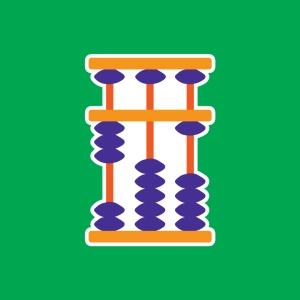 Abacus (suanpan)
Abacus (suanpan)
Learning objectives
- To illustrate the principles of the base ten system.
- To illustrate the rule of complements of 5 and 10.
- To visualize carrying over.
This animation represents the chinese abacus (suanpan). Balls are strung along rods (columns). Each rod corresponds, going from right to left, to ones, tens, hundreds, thousands…
The upper balls have a value of 5. The lower ones have a value of 1. In other words, an upper ball on the third rod from the right has a value of 5 hundreds (500).
A lower ball on the second rod from the right has a value of ten (10).
A ball is only counted when it has been moved down to the transverse (horizontal) bar.
The principle of the abacus has been known since the 3rd millenium BCE (the Mesopotamians). It enables one to carry out simple operations like additions and subtractions, but, in expert hands, the abacus can also be used to carry out multiplications, divisions, and even the calculation of roots.

Discover EduMedia for free
The interactive encyclopedia that brings science and math to life in the classroom.
Over 1,000 resources





